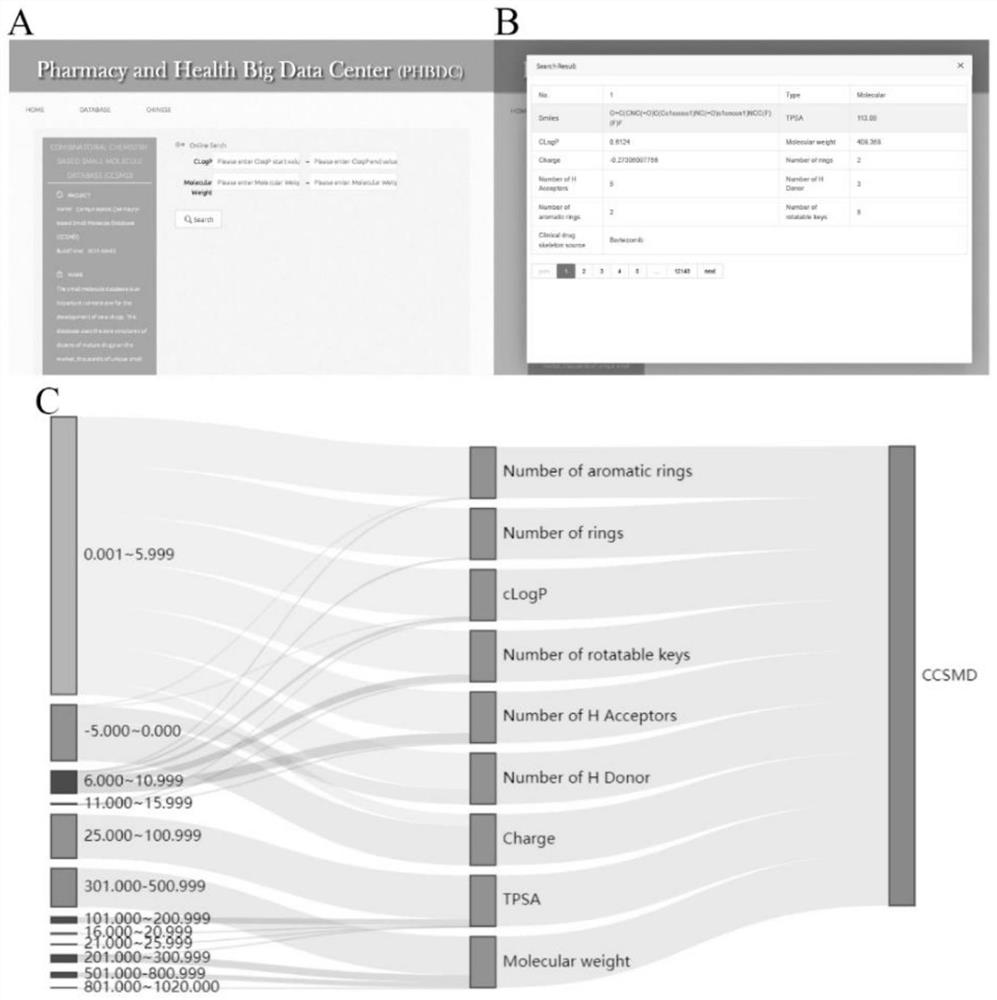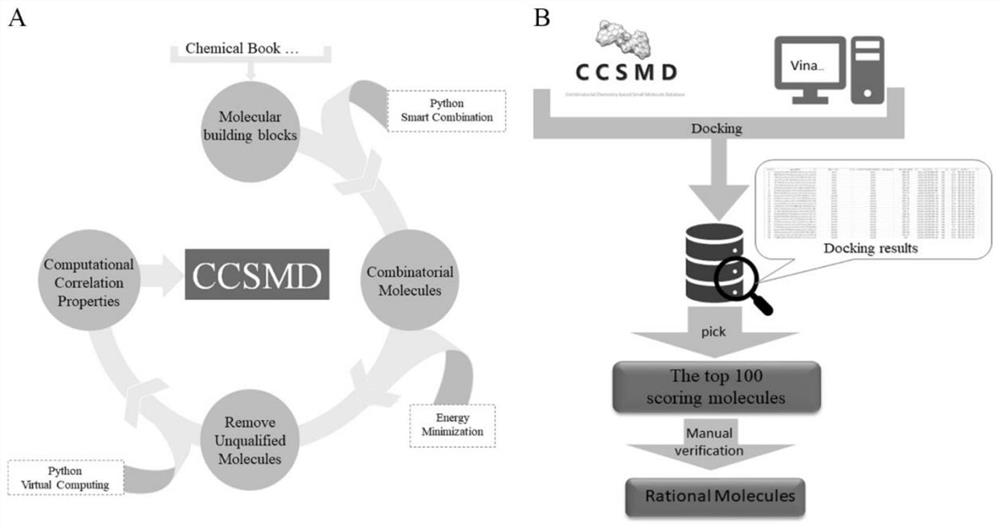Combined chemical molecule database CCSMD for screening small molecules with anticancer activity and application of combined chemical molecule database CCSMD
A technology of combinatorial chemistry and anticancer activity, applied in the combinatorial chemistry molecular database CCSMD and application fields, can solve problems such as inability to be widely used, and achieve low-cost and easy access, easy self-synthesis, and significant gastric cancer effects.
- Summary
- Abstract
- Description
- Claims
- Application Information
AI Technical Summary
Problems solved by technology
Method used
Image
Examples
Embodiment 1
[0043] Example 1 Construction and screening of the combinatorial chemical molecular database CCSMD
[0044] The construction of the database and the flow chart of compound screening are as follows: figure 1 shown; the database retrieval process is as follows figure 2 shown;
[0045] Collection of thousands of unique small molecule building blocks and commercial molecular building blocks. Contains information such as CAS numbers, chemical formulas, and molecular structural formulas of various commercial building block molecules and clinical drug fragments.
[0046] Access integrated data through a web interface that generates MySQL queries indirectly. The interface supports query functions such as "Molecular Weight Range" and "ClogP Range". In addition, basic statistics and visualizations are performed according to individual needs. Links to articles for validation or further research are provided for interested authors.
[0047] The CCSMD system includes all molecules i...
Embodiment 2
[0049] Example 2 Synthesis and activity verification experiment of compounds obtained by screening
[0050] The structural formulas of the compounds screened according to the database are shown in the following formulas (I)-(II):
[0051]
[0052]
[0053] 1. Synthesis of Compounds (I) and (II)
[0054] Compound (I): (9H-fluoren-9-yl)methyl (S)-(1-((4-chloro-2,5-dimethylphenyl)amino)-1-oxo-4-yne -2-yl) carbamate.
[0055] Synthesis method: The starting material (S)-2-((((9H-fluoren-9-yl)methoxy)carbonyl)amino)pent-4-ynoic acid (50.0 mg, 0.149 mmol) was added to 5 mL of chloride sulfoxide, and stirred at 75°C for 2 hours. The system was then concentrated under reduced pressure until a white solid was produced to give the intermediate (9H-fluoren-9-yl)methyl(S)-(1-chloro-1-oxo-4-yn-2-yl)carbamic acid ester, which was added to THF, then the starting materials 4-chloro-2,5-dimethylaniline (23.1 mg, 0.148 mmol) and DIPEA (77.0 mg, 0.596 mmol) were added to THF under ice b...
PUM
 Login to View More
Login to View More Abstract
Description
Claims
Application Information
 Login to View More
Login to View More - R&D
- Intellectual Property
- Life Sciences
- Materials
- Tech Scout
- Unparalleled Data Quality
- Higher Quality Content
- 60% Fewer Hallucinations
Browse by: Latest US Patents, China's latest patents, Technical Efficacy Thesaurus, Application Domain, Technology Topic, Popular Technical Reports.
© 2025 PatSnap. All rights reserved.Legal|Privacy policy|Modern Slavery Act Transparency Statement|Sitemap|About US| Contact US: help@patsnap.com



